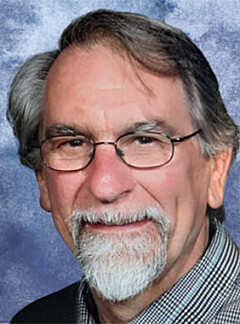Tracing Wooster’s “First Family of Learning”: New book and exhibit celebrate the Compton legacy
Book and exhibit highlight the Compton family’s lasting impact on science and education.
Author Diane Compton Ross Fischler explores her ancestral ties in "The Compton Family of Wooster," a book detailing the influential Wooster family whose members shaped American science and education, coinciding with a Wayne County Historical Society exhibit honoring their legacy.
Submitted
As a child, Diane Compton Ross Fischler and her family often stopped in Wooster en route from their home in Lakewood to visit family in Coshocton. Fischler’s mother often mentioned they were related to “the famous Compton family of Wooster.”
As an adult, Fischler decided to explore this connection. She quickly became intrigued by the Wooster Comptons. Her book, “The Compton Family of Wooster,” was published last year.
“I got so involved in each of the six family members (parents and children),” said Fischler. “That…the Comptons of Wooster became the focus of my research.”
Coincidentally, while working on the book, the Wayne County Historical Society opened an exhibit on the Comptons, which is running until the end of the year. Most of the display will become permanent.
Fischler’s book is written as a timeline, interspersed by narrative, on each member of the Compton family: parents Elias and Otelia Compton and their four children, Karl, Mary, Wilson and Arthur.
She includes quotes about the family in her opening pages: In a 1945 article about Wilson Compton, Time Magazine referred to his family as the “First Family of U.S. Education.”
In 1962, Arthur Holly Compton’s eulogy was given by Chancellor Carl Tolman of Washington University. Tolman said, “The name of Compton is perhaps the greatest family name in American science and education.” The eulogy appears in the House of Representatives Congressional Record.
After Arthur Compton’s death, the St. Louis Globe-Democrat referred to the Compton family as “America’s First Family of Learning.” The article appears in the Senate Congressional Record.
Elias Compton (1856-1938) graduated from the College of Wooster with honors, later returning to teach. “He was a professor of English, philosophy, psychology and rhetoric but also taught Latin, Greek, English literature and mathematics,” said Fischler. His official title was professor of mental science. From 1899-1921, he served as the college’s first dean.
Otelia Augspurger Compton (1858-1944) received an honorary degree from Western College for Women “for achievement as wife and mother of the Comptons.” In 1939, she was honored as “American Mother of the Year.” Compton Hall on the College of Wooster campus is named for her.
All four children attended the COW.
Karl Taylor Compton (1887-1954) was president of the Massachusetts Institute of Technology for 18 years. He appeared in photos with Einstein, Truman, Churchill and all the physicists who worked on the Manhattan Project.
Mary Elesa Compton Rice (1889-1961) and her husband were educational missionaries in what is now Pakistan. “Mary and Herbert knew many of the famous leaders in India,” said Fischler.
Wilson Martindale Compton (1890-1967) “was a distinguished economist, businessman, alternate delegate to the UN General Assembly and president of…Washington State University,” said Fischler. He was also director of the International Information Administration, the forerunner of the U.S. Information Agency.
Fishler said Arthur Holly Compton (1892-1962) was arguably the most famous of the Compton siblings. At age 35, he was a co-recipient of the Nobel Prize in Physics. He appeared on the cover of Time Magazine for his work on gamma rays. He appointed Robert Oppenheimer to design the atomic bomb and from 1942-1945 was a key leader of the Manhattan Project. He became chancellor of Washington University. He invented the speed bump. Arthur Compton appears in a photo taken at the 1927 Solvay Conference on Electrons and Photons that has been called one of history’s most intelligent photos because of the concentration of genius. He is seated behind Einstein.
The Compton House at 816 College Ave. is designated a Wayne County Historical Landmark.
“I never dreamed I would become so involved with the six Comptons themselves,” Fischler said. “Finding that ancestral connection didn’t seem to matter anymore. By the end of my research, I felt like Elias and Otelia and their four children were ‘my family’ because I got to know them so intimately, even though I was born 55 years after the youngest child, Arthur Holly Compton, was born.”
To request a copy of the book, contact Fishler at diane@proofinggrounds.com.












































